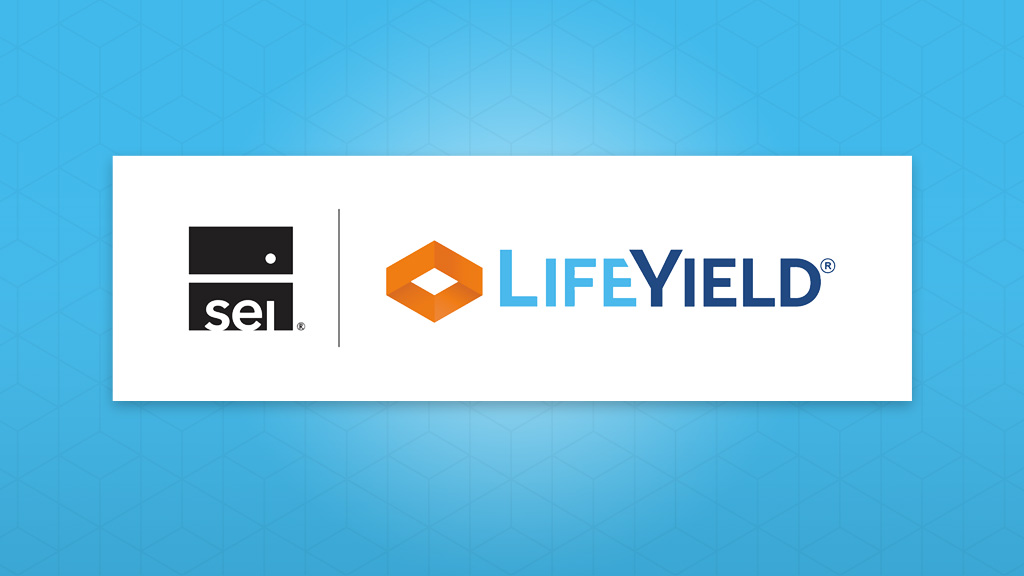Watch Out for What Your Clients May Owe in Income Taxes on Social Security Benefits

Understanding the impact that tax-deferred retirement income has on your clients’ Social Security benefits can have a profound impact on their financial freedom in retirement.
I speak from experience, both personally (as a careful retirement saver) and professionally (as someone who works on products to help advisors chart these waters for their clients). Many of us have been schooled to save diligently for retirement using tax-deferred plans such as individual retirement accounts (IRAs) and company-sponsored plans like 401(k) plans.
Many of us also anticipate using our Social Security benefit. After all, we’ve spent many years paying into the plan. We need to start reaping some of those benefits, right?
But as we get closer to retirement, it is important to start planning where our income will come from. At this stage, advisors need to help clients figure out how withdrawals from tax-deferred accounts can affect how their Social Security benefits are taxed.
Otherwise, your clients could get a big surprise come tax time. Not good for them. Not good for you, either.
To better understand the government’s “gotcha,” here’s a guide to how Social Security benefits are taxed to help you educate clients and help them make tax-smart choices.
Determining How Much of a Social Security Benefit Is Taxable
The rules defining how much of a Social Security benefit is taxed are complicated. Like the way ordinary income is taxed, the Internal Revenue Service (IRS) uses a progressive bracket that considers an individual’s or a couple’s adjusted gross income (AGI), tax-free interest, and Social Security benefit amount(s).
To determine exactly how much of a client’s Social Security benefit is taxable, you need to perform two “tests” and compare the results
#1 – The Provisional Income Test
First, calculate your client’s annual provisional income.
Provisional income amount = AGI + tax-free interest + 1/2 Social Security benefit
Next, determine how much of a client’s Social Security benefit is taxable.
Use the provisional income amount and the government’s provisional income threshold table to determine how much of your client’s Social Security benefit is taxable.
| Single | Married Filing Jointly | |||
| Min | Max | Min | Max | |
| 0% | $25,000 | $32,000 | ||
| 50% | $25,001 | $34,000 | $32,001 | $44,000 |
| 85% | $34,001 | $44,001 | ||
#2 – Calculate 85% of the Social Security Benefit Amount
That’s simpler – multiply the Social Security benefit by 0.85.
Compare the Two Amounts
The amount of the Social Security benefit that clients will have to pay income taxes on is the lesser of the two tests, or calculations, you just did.
This can be easier to understand when illustrated with an example of a situation that your clients may have.
Example: How Tax-Deferred Income Can Diminish After-Tax Social Security Benefits
Let’s consider a couple of scenarios using a married household, Charlie and Lisa, who are both over age 65. They file their federal income taxes jointly, using the standard deduction. They live in Florida, where there is no state income tax.
Charlie and Lisa have a combined Social Security benefit of $4,417 a month. They also withdraw $2,000 monthly from a tax-deferred account.
| Income | Monthly | Annual |
| Social Security benefit amount | $4,417 | $53,000 |
| IRA distributions | $2,000 | $24,000 |
| Total | $6,417 | $77,000 |
One year, Charlie and Lisa need to make some home repairs. They decide to withdraw $40,000 from their tax-deferred retirement account. Let’s see how this could affect their taxable income.
| Income | Monthly | Annual |
| Social Security benefit amount | $4,417 | $53,000 |
| IRA distributions | $2,000 | $24,000 |
| IRA distribution (home repairs) | $40,000 | |
| Total | $6,417 | $117,000 |
Next, let’s use the testing method to examine how much of the Social Security benefit amount is taxable without the one-time, lump-sum IRA withdrawal and with it.
Scenario 1: No Lump-Sum Withdrawal
| Line Items | Amount |
| Social Security benefit amount | $53,000 |
| Total IRA distributions | $24,000 |
| Provisional income* | $50,500 |
| Test 1** – Using provisional income and table | $11,525 |
| Test 2 – 85% of Social Security benefit | $45,050 |
| Taxable Social Security benefit (Lesser of Test 1 and Test 2) | $11,525 |
* $24,000 + ($53,000 x 0.5) = $50,500
** ($32,000 x 0) + ($12,000 x 0.50) + ($6,500 x .85) = $11,525
Scenario 2: Withdrawal to Pay for Repairs
| Line Items | Amount |
| Social Security benefit amount | $53,000 |
| Total IRA distributions | $64,000 |
| Provisional income* | $90,500 |
| Test 1** – Using Provisional income and table | $45,525 |
| Test 2 – 85% of Social Security benefit | $45,050 |
| Taxable Social Security benefit (Lesser of Test 1 and Test 2) | $45,050 |
* 64,000 + ($53,000 x 0.5) = $90,500
** ($32,000 x 0) + ($12,000 x .50) + ($46,500 x .85) = $45,525
Note how much more of the Social Security Benefit becomes taxable in Scenario 2!
Finally, let’s see what happens to their taxable income and, ultimately, the amount of tax they’ll owe.
Scenario 1: No Lump-Sum Withdrawal
| Line Items | Amount |
| Total IRA distributions | $24,000 |
| Taxable Social Security benefit amount | $11,525 |
| AGI | $35,525 |
| Standard deduction | $30,700 |
| Taxable income | $4,825 |
| Federal tax owed | $482 |
Scenario 2: Withdrawal to Pay for Repairs
| Line Items | Amount |
| Total IRA distributions | $64,000 |
| Taxable Social Security benefit amount | $45,050 |
| AGI | $109,050 |
| Standard deduction | $30,700 |
| Taxable income | $78,350 |
| Federal tax owed | $8,962 |
As you can see, Charlies and Lisa will owe much more in federal taxes ($482 vs. $8,962) when they take a one-time distribution from a tax-deferred account to cover the home repairs!
How to Avoid the Social Security Income Tax Trap
If you have clients like Charlie and Lisa, look across their portfolios. They may have other accounts — tax-free accounts (Roth IRA, for example) or taxable accounts (such as a brokerage account). Those could be better choices for lump-sum withdrawals to fund significant one-time expenses.
Advisors are able to help clients at all stages limit their tax liabilities and maximize their income, whether they are:
- Accumulating wealth for retirement
- Evaluating when to file for Social Security benefits
- Retired and ready to turn savings into income streams
LifeYield APIs (application programming interfaces) integrated into comprehensive advice platforms help advisors automatically perform functions that are key to producing tax alpha:
- Asset location — place assets and investments in the accounts that offer them the best tax treatment
- Multi-account rebalancing — to keep a household’s entire portfolio aligned with their risk target and timeline
- Tax-smart withdrawals — when needed to fund a purchase (like a home, boat or car)
- Social Security optimization — to decide when to file for benefits and, if needed, illustrate options for closing income gaps while waiting to collect retirement benefits from the government
- Retirement income streams — creating a plan for withdrawals from an array of household accounts to optimize income and limit tax liability
- Decumulation strategies — to evaluate the effects of required minimum distributions (RMDs) and Roth conversions to limit tax exposure in retirement
Taxes are the most significant expense in retirement. Limiting your clients’ tax exposure will increase their savings, encourage them to consolidate assets and accounts with one advisor, and grow assets under management (AUM).
Monthly insights from our Chief Growth Officer, Jack Sharry
Get exclusive insights and interviews from around the industry

 By
By 




